Menopause & Dry Eye: 5 Things You Need to Know
Women over the age of 50 are at a greater risk of experiencing Dry Eye Syndrome.[1] In fact, around 61% of perimenopausal and menopausal women are affected by Dry Eye Syndrome.[2] In this blog, we’ll be sharing everything you need to know about menopause and Dry Eye.
What are the symptoms of Dry Eye Syndrome?
Dry Eye Syndrome is a chronic condition that can have many different causes.[3] It can be moderate to severe, and can flare up due to environmental conditions and lifestyle.[4]
Dry Eye symptoms include:
- Itchy eyes
- Sore eyes
- Gritty eyes
- Red eyes
- Blurry vision
- Sensitive to light
- Eyes more watery than normal
- Tears drying up (tear evaporation)
- Decreased tear production. [5]
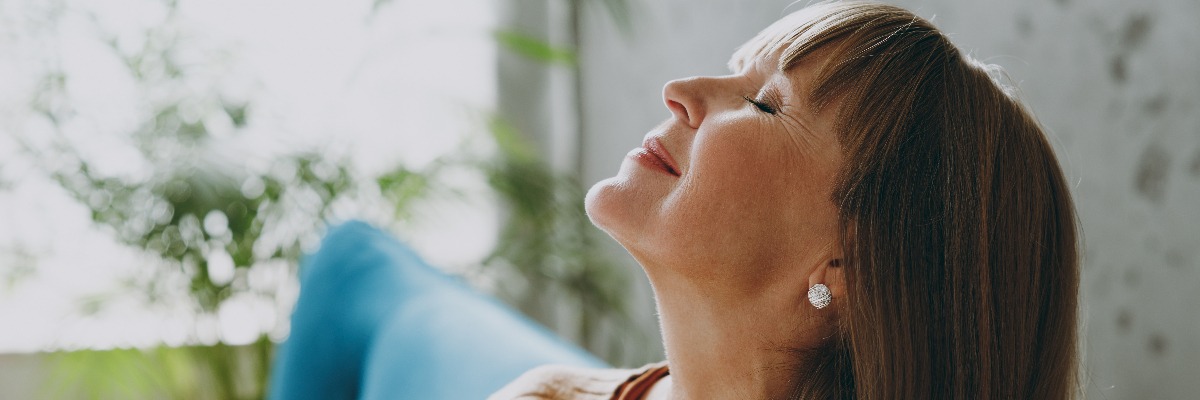
Can menopause affect your Dry Eye?
Yes! Research published in the National Library of Medicine shows that there is a link between menopause and dry eyes due to women’s decreasing hormones. This can cause itchy, sore and dry eyes.[6]
Why are women over 50 more likely to suffer from chronic Dry Eye?
Menopause is when your periods stop because of the decrease in hormone levels, which usually happens between the ages of 45 and 55. Perimenopause is when you have symptoms before your periods stop.
Menopause can cause symptoms such as:
Perimenopausal, Menopausal and Postmenopausal women are particularly prone to dry eyes, because sex hormones such as androgens affect tear production. Androgens are present in all genders, but females present lower levels, which then decrease after menopause.[6] This affects the balance of tear production, causing dry eyes.

What does menopause do to your eyes?
Menopause and eye problems can often go hand in hand. Menopause can alter your eyesight and even the shape of your eyes!
Dry Eye Disease is also more common after menopause, as well as cataracts. There is also a risk of glaucoma, which can come with age. [8]
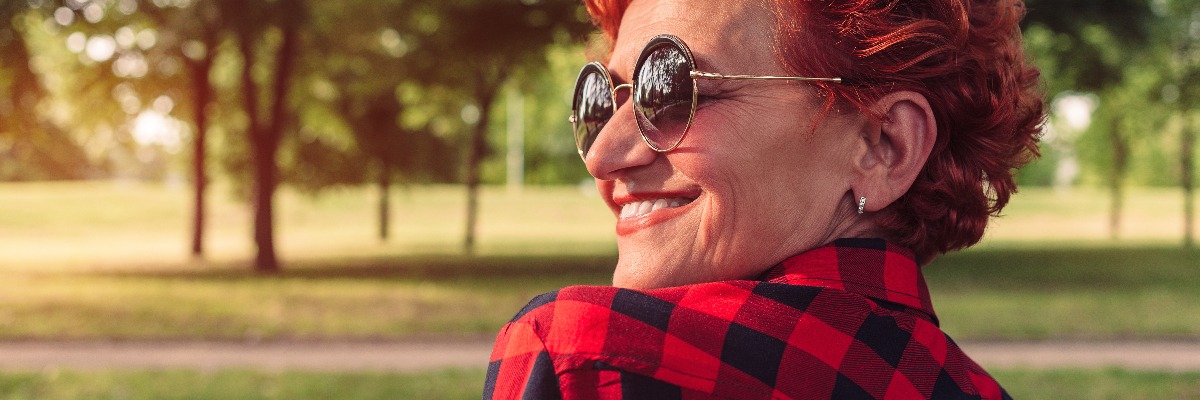
Are dry eyes part of perimenopause?
If you have dry eyes and perimenopause, you’re not alone! Dry eyes can be linked to perimenopause, due to changing hormonal balances. Often unspoken of, Laurie G. Barber, Doctor of Medicine, said that perimenopause and Dry Eye should have more awareness and attention. [9]
Does low oestrogen cause Dry Eye?
When women go through menopause, the body makes less oestrogen, progesterone and androgen. This can in turn cause Dry Eye Disease. [1]
Your doctor might recommend hormone therapy to restore your oestrogen levels. However, one large study found that long-term hormonal replacement therapy (HRT) can put you more at risk of Dry Eye and make symptoms worse. [10]

What other things can make Dry Eye worse?
Dry Eye Syndrome can have many different causes. When they overlap with each other, patients can experience painful flare-ups. Here are some of the factors other than menopause that can trigger Dry Eye symptoms:
Dry Eyes at night
Night time Dry Eye affects many people, as your body’s metabolism slows at night, so fewer tears are produced. [11]
For people that already suffer from chronic dry eyes, this can result in irritating symptoms during the night because they already deal with problems to do with the quality and quantity of tear production.
Computer Vision Syndrome
Staring at screens reduces our blink rate, causing our eyes to dry out.[12] Chronically dry, itchy eyes are one of the key symptoms of Computer Vision Syndrome, which between 50-90% of people who work at a computer screen can suffer from. [13]
Does Dry Eye Disease improve after menopause?
Dry Eye symptoms can be improved through different changes and choices we make. Here are our top tips for dealing with dry eyes during menopause:
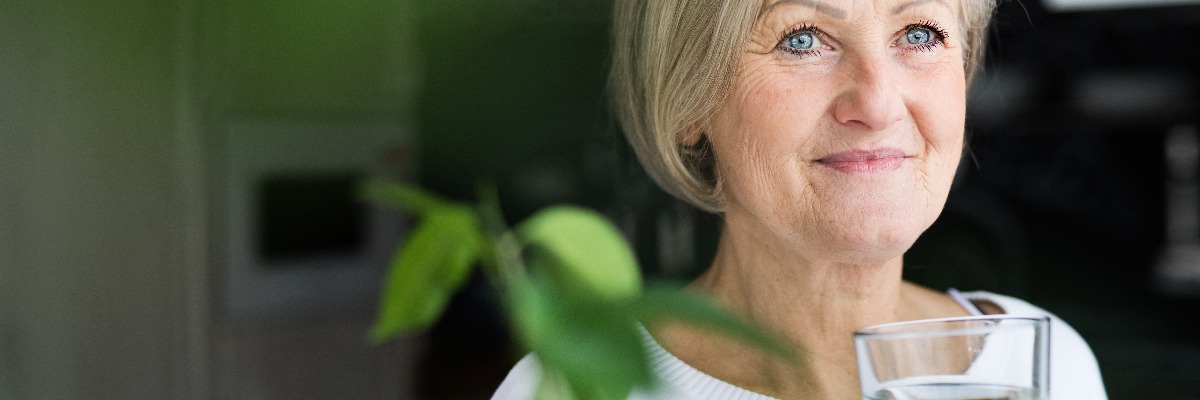
1. Eat well and stay hydrated
Drink lots of fluids to properly hydrate your body and eat a diet rich in omega-3 fatty acids and Vitamin A to encourage healthy tear production and prevent Dry Eye.[14] Experts suggest that you should drink between 8 and 10 glasses of water a day, if you have Dry Eye Disease.[15] Discover more about what vitamins are best for Dry Eye here: 6 Vitamins to Boost Eye Health
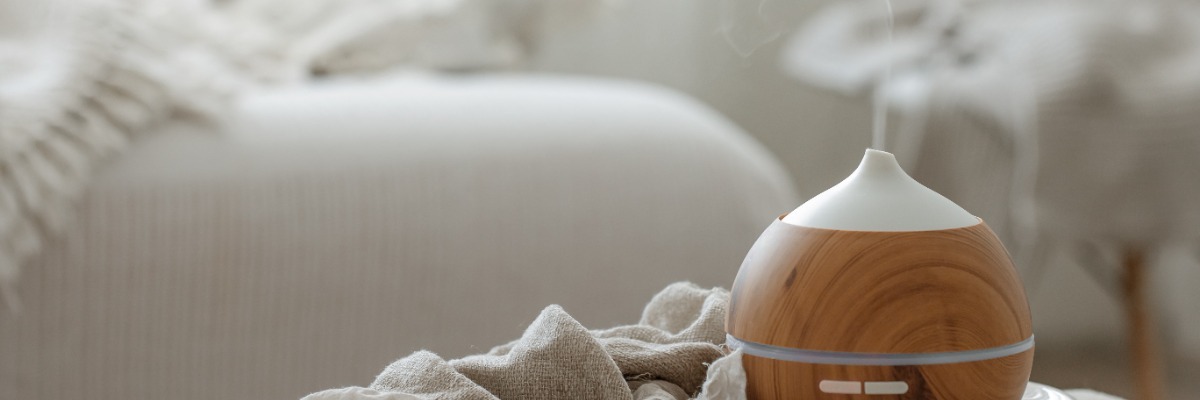
2. Use a humidifier to prevent dry eyes.
Humidifiers add moisture to the air, which can help people who suffer from Dry Eyes.[16] These can often be bought at a low cost, making them an easy solution to bring into your home or office space. For more information on lifestyle changes that you can make, visit our blog: 6 Lifestyle Tips to Help Dry Eye

3. Cut down on smoking and drinking.
Do not smoke or drink too much alcohol as this can profoundly affect your Dry Eye symptoms. This is because smoking can change the composition of your tears over time and alcohol dehydrates your eyes.[17][18]
Our blog about alcohol and Dry Eye is a great resource: Is Drinking Alcohol Bad For Your Eyes?
You can also read more about the effects of smoking on Dry Eye here: Smoking and Dry Eye

4. Take regular breaks from staring at screens
Taking regular breaks to rest your eyes from digital screens can prevent Computer Vision Syndrome. One technique that can help is the 20/20/20 rule: every 20 minutes, look at something 20 feet away for 20 seconds.[19] To find out more about Computer Vision Syndrome, read our blog: What is Computer Vision Syndrome?
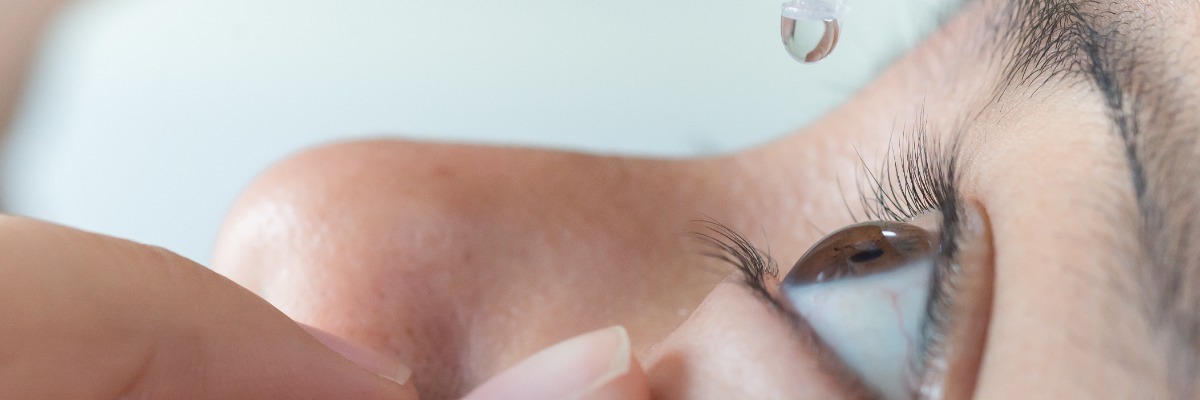
5. Follow a three-step treatment plan
A three-step treatment plan is a great way to effectively manage your Dry Eye.
Step 1: If you are suffering from Evaporative Dry Eye, or Meibomian Gland Disorder, use a heated compress, such as Meibopatch®, to unblock your meibomian glands and relieve your eyes.[20]
Step 2: Cleanse and wipe away the melted oil blocking your glands, as well as any built-up debris with a cleanser like Naviblef ®, which is specially designed to reduce discomfort.[21]
Step 3: Incorporate an effective lubricant such as any drop from the VISUFamily range. Depending on your condition, you can choose an eye drop that will help ease your symptoms.
Best eye drops for menopause and Dry Eye
Don’t let Dry Eye and menopause hold you back! Eye drops are a great solution for fast and effective Dry Eye relief. Drops, tears, gels and ointments should all be considered to help.
We offer a range of eye care solutions including our VisuEvo® eye drops. These drops include vitamins such as Vitamin A, which can help to reduce the effects of Dry Eye. You can browse these drops here: VisuEvo® Eye Drops
In most cases, the best way to treat dry eyes, Also known as dry eye syndrome, is to use eye gel or eye drops.
VisuXL Gel® is a preservative-free smart gel lubricant for dry eye syndrome. It provides comfort in a bottle with it’s long-lasting lubrication properties giving 12-hour dosing with just one drop and is suitable for both day and night use.
VisuXL® is a preservative-free eye drop lubricant for dry eye syndrome. Due to its unique ingredients, VisuXL® will help you recover from eye surgery, an injury or persistent damaging dry eye.
VisuEvo® is a preservative-free eye drop that prevents excessive evaporation of the tear film. Its unique formula contains omega-3 essential fatty acids, Vitamins A and D and ultra-filtered phospholipids that facilitate tear film presentation and control evaporation.
All three products are contact lens-friendly and can be used for 180 days after opening.
Shop now
References
- Wilson, Debra Rose, ‘Menopause and Dry Eyes: What’s the link?’, Healthline, 01/04/2020. Accessed April 2022.
- Dry Eye Center of NY & NJ, ‘What’s the Link Between Dry Eye and Menopause?’, 08/04/21. Accessed January 2023.
- Mayo Clinic, ‘Dry Eyes. Accessed April 2022.
- Monica Alves, Priscila Novaes, Monica de Andrade Morraye, Peter Sol Reinach, Eduardo Melani Rocha, ‘Is Dry Eye an Environmental Disease?’, Arq Bras Oftalmol, May-Jun 2014;77(3):193-200. Accessed April 2022.
- NHS, ‘Dry eyes’. Accessed April 2022.
- Peck, Travis, Olsakovsky, Leslie, Aggarwal Shruti, ‘Dry Eye Syndrome in Menopause and Perimenopausal Age Group’, J Midlife Health, 2017 Apr-Jun; 8(2): 51–54. Accessed April 2022.
- NHS, ‘Menopause’. Accessed January 2023.
- The North American Menopause Society, ‘Menopause and Eye Health’. Accessed January 2023.
- Altersitz, Katrina. ‘Premenopausal women need extra dry eye care’, Ocular Surgery News, Healio, 15/12/06. Accessed January 2023.
- AlAwlaqi, A. MBBS, MSc; Hammadeh, M. PhD. ‘Examining the relationship between hormone therapy and dry-eye syndrome in postmenopausal women: a cross-sectional comparison study’, Menopause, 23(5):550-555, 05/16. Accessed February 2022.
- Lazarus, Russell. ‘Burning Eyes at Night’, Optometrists Network, 06/02/21. Accessed April 2022.
- Wheeler, Regina Boyle. ‘Dry Eye and Screen Use’, WebMD, 21/06/21. Accessed April 2022.
- Watson, Stephanie, ‘What is Computer Vision Syndrome?’, WebMD, 29/11/21. Accessed April 2022.
- BergFeinfield Vision Correction, ‘6 Foods to Eat to Help Dry Eye’, 27/02/20. Accessed April 2022.
- Complete Eye Care, ‘How Does Hydration Affect My Eyes?’. Accessed January 2023.
- Wang, M. Chan, E. Ea, L. ‘Randomized Trial of Desktop Humidifier for Dry Eye Relief in Computer Users’, Optometry and Vision Science: November 2017 – Volume 94 – Issue 11 – p 1052-1057. Accessed April 2022.
- Griffin, Morgan. ‘Smoking and Dry Eye’, WebMD, 05/05/21. Accessed April 2022.
- You, Young-Sheng, Qu, Nai-Bin, Yu, Xiao-Ning, ‘Alcohol consumption and dry eye syndrome: a Meta-analysis’, International Journey of Opthamology, 2016; 9(10): 1487–1492. Accessed December 2021.
- Marcin, Ashley. ‘How Does the 20-20-20 Rule Prevent Eye Strain?’, Healthline, 03/02/17. Accessed April 2022.
- Meibopatch® Instructions for Use (IFU). Accessed April 2022.
- Naviblef ® Instructions for Use (IFU). Accessed April 2022.




